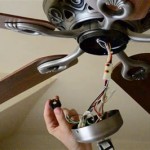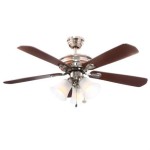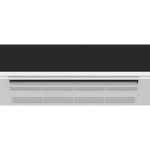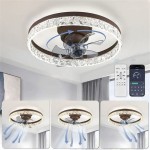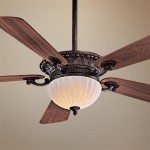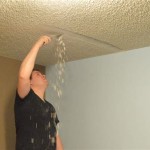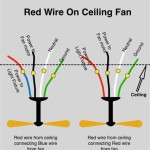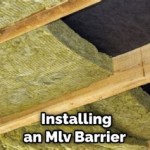Can You Hang a TV From The Ceiling?
Mounting a television from the ceiling offers a unique and space-saving solution for various environments, from homes to businesses. This approach can free up valuable wall space and create a more flexible viewing arrangement. However, ceiling mounting a TV requires careful consideration of several factors, including weight capacity, ceiling type, and proper installation techniques.
One of the most crucial aspects of ceiling mounting a TV is determining the weight capacity of the ceiling. Standard drywall ceilings are typically designed to support lighter fixtures. Heavier televisions may necessitate reinforced mounting points or specialized ceiling mounts designed for higher weight limits. Consulting a professional installer or structural engineer can provide valuable insights on the ceiling's load-bearing capabilities and advise on the appropriate mounting solution.
The type of ceiling also plays a significant role in determining the appropriate mounting method. Solid concrete ceilings offer the most robust mounting surface, capable of supporting heavier TVs with appropriate anchors. Suspended ceilings, often found in commercial spaces, require specialized mounting brackets that attach to the ceiling grid or supporting beams. For drywall ceilings, it's essential to locate the ceiling joists, which provide the structural support needed for secure mounting.
Selecting the correct ceiling TV mount is paramount for safety and stability. Various types of ceiling mounts are available, each designed for specific TV sizes and weights. Full-motion mounts offer the greatest flexibility, allowing for tilting, swiveling, and rotating the TV to achieve optimal viewing angles. Fixed mounts offer a more permanent solution and are generally more cost-effective. Articulating mounts provide a balance between fixed and full-motion, offering some adjustability while maintaining a relatively low profile.
Before commencing the installation process, gather the necessary tools and materials. These typically include a stud finder, drill, appropriate screws and anchors, a level, measuring tape, and the chosen ceiling mount. Having all the necessary equipment readily available streamlines the installation and minimizes potential disruptions.
The installation process begins by locating the ceiling joists using a stud finder. Marking the joist locations ensures the mount is securely attached to the structural supports of the ceiling. Once the joists are located, the mounting plate can be attached using appropriate screws and anchors. It's crucial to ensure the mounting plate is level to prevent the TV from tilting or hanging unevenly.
After securely attaching the mounting plate, the TV bracket can be affixed to the TV itself. Most TV brackets are compatible with VESA mounting standards, which define the screw hole patterns on the back of televisions. Carefully align the bracket with the VESA holes and securely fasten it using the provided screws.
With the bracket attached to the TV, the final step is to connect the TV to the mounting plate. This typically involves carefully lifting the TV and aligning the bracket with the mounting plate. Depending on the mount type, this may require assistance from another person. Once the TV is securely connected to the mount, all necessary cables, such as power and HDMI cables, can be connected and concealed for a clean and organized appearance.
Cable management is an important consideration for ceiling-mounted TVs. Exposed cables can create a cluttered and unsightly appearance. Cable management solutions, such as cable ties, conduits, or ceiling-mounted cable organizers, can help conceal and organize the cables, ensuring a neat and professional installation.
Safety should always be a primary concern when undertaking any home improvement project. When mounting a TV from the ceiling, wearing appropriate safety gear, such as safety glasses and gloves, is recommended. Ensuring the mounting location is free of electrical wiring and plumbing is also essential to avoid potential hazards. If there is any uncertainty about the installation process, consulting a professional installer is always the safest course of action.
Viewing angle and distance are crucial factors to consider when planning a ceiling-mounted TV installation. The optimal viewing angle will depend on the room layout and seating arrangements. Full-motion mounts provide the flexibility to adjust the viewing angle as needed. The distance between the viewer and the TV also impacts the viewing experience. Generally, larger TVs require greater viewing distances for optimal comfort.
Ceiling-mounted TVs offer a versatile and space-saving solution for various environments. However, proper planning, careful selection of appropriate mounting hardware, and meticulous installation are crucial for a safe and successful outcome. Considering factors such as ceiling type, weight capacity, and viewing angle ensures an enjoyable and secure viewing experience.
Regular maintenance and inspection of the ceiling mount and associated hardware are essential for ensuring long-term safety and stability. Periodically checking the tightness of screws and bolts and inspecting the mount for any signs of wear or damage can help prevent potential issues. If any problems are detected, addressing them promptly can prevent more serious problems from developing.

Low Budget Creative Ways You Can Mount Your Tv In Hdb Tiger

How To Hang Tv From Ceiling Easily An Expert Guide By North Team Installation Toronto

How To Hang A Tv Ceiling Mount Genius Mounts

20 Diy Ways To Mount Your Flat Screen Tv

Tv Ceiling Mount From Amazon

4 Advantages Of Using A Ceiling Mount For Your Tv Tiger

Should I Use A Tv Ceiling Mount For My Space See Here Primecables Ca Blog

Motorized Flip Down Flat Screen Tv Ceiling Mount

Motorized Flip Down Tv Ceiling Mount
Diy Motorized Tv In Ceiling Mount Steemit

